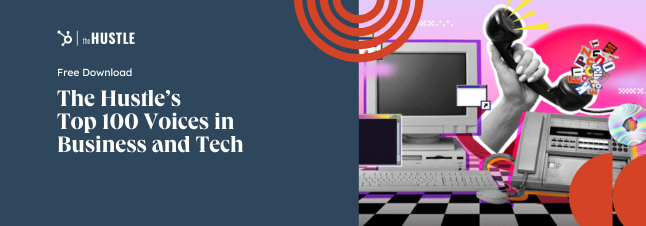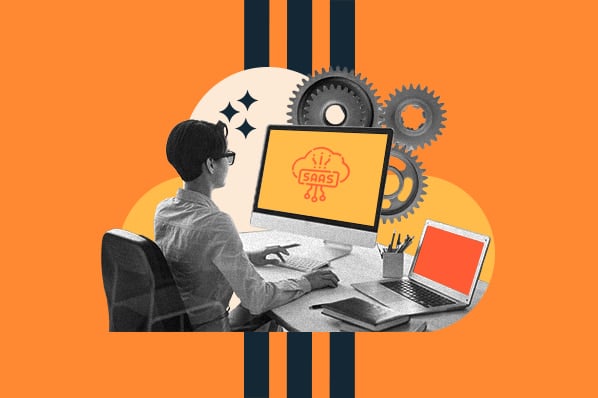iPaaS Vendors: Top Features to Look For
iPaaS — which stands for Integration Platform as a Service — helps you connect the tools and systems that power your business in one place, so information can be shared without high-maintenance, one-off integrations, or manual data entry.
When considering iPaaS vendors and companies, you should know what to look for to get the most out of your investment. While some solutions are free, others can come with a hefty price tag.
Here are the top features you should look for.
User-Friendly Workflows Tool
iPaaS solutions allow you to integrate two or more apps to automate a process that otherwise takes longer to complete. It’s a critical tool to have in your workflow automation arsenal. As such, it should allow you to build workflows and connect apps in a user-friendly, no-code workflows tool.
The exception would be if you’re planning to create highly personalized workflows and integrations using code.
API Management Tool
You may be looking for an iPaaS provider that can help you build and deploy an API. You may also wish to create a unique integration tool using APIs from various apps and platforms. Some iPaaS services offer an API management feature either within the platform or as an add-on.
Templated Integrations
For small-to-medium businesses without an integration workflow, it’ll be critical to choose a tool that offers at least a few basic templated integrations to get you off the ground. Whether you want to create a simple or complicated series of integrations, the iPaaS vendor should offer a jumping-off point.
Top-Notch Security
iPaaS vendors will be handling your company’s confidential data, so they should offer end-to-end security and encryption. Most iPaaS vendors list their certifications and describe their security measures on their websites. If you have any doubts or special concerns about the security of your data, be sure to bring up any questions during the demo or consultation.
Ready to dive into the best iPaaS vendors of this year?
Top IPaaS Vendors
- Dell Boomi
- Oracle Integration Cloud
- Workato
- TIBCO Cloud
- Elastic.io
- Flexspring
- Informatica
- DCKAP Integrator
- IBM AppConnect
- SnapLogic
- Zapier
- Jitterbit
- Albato
- Amazon API Gateway
- Pabbly Connect
- Celigo Intergrator.io
- Tray.io
- Xplenty
- Mulesoft
- Cleo Cloud Integration
- Talend Cloud Integration
- Blendr.io
- RudderStack
- Skyvia
We wrote a deep dive on iPaaS here if you'd like to learn more about the basics of iPaaS services, view a complete glossary of iPaaS terms, and better understand what iPaaS can potentially offer your business.
Now, it’s time to check out the best iPaaS vendors you can use to integrate your business’s apps and services.
1. Dell Boomi
Acquired by Dell in 2010, Boomi offers a cloud-based integration and API management solution with all the bells and whistles you could ask for: workflows, API design, application deployment, B2B/EDI management, and much more. Within Boomi, you can design end-to-end workflows and process data across multiple applications. Suitable for enterprise and small businesses from many different industries, Boomi has been considered a leader in the iPaaS space for the last six years by Gartner.
Features
- User-friendly workflows tool: Boomi has a drag-and-drop UI for creating integrations and workflows.
- API management tool: Boomi includes an API management tool to design and deploy APIs.
- Templated integrations: Boomi includes templates and a process library for the easy creation of integrations.
- Top-notch security: Boomi details its approach to data security here.
Best for: Because of its low starting price and robust features, Dell Boomi is a great fit for small-to-enterprise businesses that have any need for integrations. There are, however, free tools that have similar capabilities.
Price: Starting at $50/month.
2. Oracle Integration Cloud
If you're looking for a straightforward iPaaS solution with industry best practices and premade integration flows baked into the product, Oracle Integration Cloud might be an option to take a deeper look at. Oracle serves up an extensive library of out-of-the-box adapters to different SaaS and on-premises applications, making the initial set-up less time consuming for your team.
Features
- User-friendly workflows tool: Oracle Integration Cloud offers a drag-and-drop tool for creating connections between apps. There are, however, more user-friendly tools out there, such as Workato.
- API management tool: Oracle offers an API platform.
- Templated integrations: Oracle Integration Cloud includes a vast library of premade integrations.
- Top-notch security: Oracle details its approach to data security here.
Best for: Oracle Integration Cloud is a great fit for enterprise businesses that can benefit from the premade integrations Oracle offers in its library.
Price: Choose from several different pricing structures, including a pay-as-you-go plan starting at $1.2097/message, and a monthly flex plan starting at $0.3226/message.
3. Workato
This iPaaS solution was designed to enable better connection between business users and IT, allowing both groups to plan, create, and easily maintain integrations between different systems. Workato provides pre-built integration flows between 300 of the most popular SaaS products, and the ability to design custom integrations in a simple, drag-and-drop interface.
Features
- User-friendly workflows tool: Workato has a user-friendly tool for integrating apps and creating workflows.
- API management tool: Workato has an API Platform.
- Templated integrations: Workato has a library of community-made "recipes" for launching integrations.
- Top-notch security: Workato details its approach to data security here.
Best for: Workato is a great fit for small-to-medium businesses that use the apps listed in the Workato community recipes page.
Price: Contact Workato for a quote.
4. TIBCO Cloud™
TIBCO Cloud prides itself on providing an easy-to-use iPaaS solution that simplifies the creation and management of integration flows in your business. They consider themselves to be an "application neutral" technology partner for their clients — meaning, they won't try to push you towards using a particular application or ecosystem. Instead, they'll work with you to build a solution that connects the on-premises tools and cloud-based applications your business already prefers to use.
Features
- User-friendly workflows tool: TIBCO Cloud Integration has a visual UI for building workflows and integrations. It does require some knowledge of code, so it’s not recommended for beginners.
- API management tool: TIBCO Cloud offers an API management tool that’s sold separately from its Integration tool.
- Templated integrations: TIBCO Cloud has a library of premade connectors.
- Top-notch security: TIBCO Cloud details its approach to data security here.
Best for: TIBCO Cloud is a great fit for large-to-enterprise businesses that need extensive custom integrations.
Price: Starting at $400/month for a Basic Plan, $1500/month for a Standard Plan, and custom pricing for Hybrid plans based on your unique needs.
5. Elastic.io
Elastic.io promises to remove the laborious product management component of custom integrations and reduce the amount of time spent on integrations at your company by up to 80%. This iPaaS vendor also takes an as-a-service mentality to how they work with customers, helping you support feature roll-outs and upgrades, bug fixes, and connector updates.
Features
- User-friendly workflows tool: Elastic.io has a user-friendly integration flow designer.
- API management tool: Elastic.io offers an API integration tool that allows you to integrate APIs from other services.
- Templated integrations: Elastic.io has a library of premade connectors.
- Top-notch security: Elastic.io details its approach to data security here.
Best for: Elastic.io’s lower investment and user-friendly integrations builder makes it a great choice for medium-to-large business just starting to create app integrations.
Price: For system integrators, the monthly plans start at €199/month; for enterprise customers, the yearly plans start at €1,499/month; and for software vendors, they offer the platform as OEM with customizable pricing (i.e. on request).
6. Flexspring

This iPaaS vendor specializes in integrations for the Human Resources industry, offering a comprehensive library of pre-built connectors aimed at helping your HR department align their applications and tools in one seamless, secure hub. Flexspring has out-of-the-box connectors with most popular HR applications and software tools, including Workday, Greenhouse, Monster, and Oracle HCM.
Features
- User-friendly workflows tool: Flexspring offers a visual integrations builder tool.
- API management tool: Flexspring uses an API-to-API connection to integrate apps; however, it doesn’t offer an option for managing or creating custom APIs.
- Templated integrations: Flexspring offers a library of prebuilt connectors.
- Top-notch security: While Flexspring doesn’t have security documentation, it indicates its level of security in its terms and conditions.
Best for: Flexspring is a great fit for recruitment firms and HR departments looking to streamline workflows and integrate the apps in their tech stacks.
Price: Contact Flexspring for a quote.
7. Informatica
Informatica has been around since 1993, and still continues to be an industry leader in helping businesses manage their data effectively and securely. Specializing in enterprise level iPaaS solutions, Informatica lists big companies like GE, Unilever, and L'Oreal among their clients. If you're a large company looking for hands-on support on your custom iPaaS journey, Informatica might be a good fit for your needs.
Features
- User-friendly workflows tool: Informatica has a visual integrations builder tool.
- API management tool: Informatica offers an API management tool to build and deploy APIs.
- Templated integrations: Informatica offers a library of prebuilt connectors.
- Top-notch security: Informatica details its approach to data security here.
Best for: Informatica is a great fit for enterprise businesses with legacy applications that they’d like to integrate with their cloud-based apps and services.
Price: Contact Informatica for a quote.
8. DCKAP Integrator
DCKAP Integrator is an ERP integration platform built for distributors. This software offers limitless software integrations for ERPs such as NetSuite to ecommerce platforms like Adobe Commerce (formerly Magento), CRMs like HubSpot and Salesforce, and other apps like an accounting program like Quickbooks. You can request the inclusion of additional programs in case what you’re looking for is not on the list.
Features
- User-friendly workflows tool: DCKAP offers a large variety of tools and exciting features including a flow builder.
- API management tool: DCKAP provides an API management tool to help monitor and secure your APIs.
- Mappings & Modifiers: DCKAP Integrator allows you to map the fields from source to destination and also allows modification of values.
- Templated integrations: DCKAP Integrator has a library of pre-set templates.
- Top-notch security: DCKAP Integrator does not store a copy of the data that it syncs. Read more of its security measures in its security documentation.
Best for: DCKAP Integrator is a great fit for ecommerce distributors who want a streamlined sales process with reporting, centralized real-time data, and analytics just a click away.
Price: Contact DCKAP for a quote.
9. IBM AppConnect
IBM's iPaaS solution markets itself as an easy way to connect apps, build APIs, integrate data, and act on events. AppConnect comes equipped with a series of templates made up of common patterns you can use to quickly set-up integration flows for your business, and start getting value immediately. SMBs looking to get started with iPaaS and explore the possibilities of new applications might benefit from using AppConnect.
Features
- User-friendly workflows tool: AppConnect features a visual, no-code integrations builder.
- API management tool: AppConnect offers an API management tool to build and deploy APIs.
- Templated integrations: AppConnect has a library of prebuilt connectors.
- Top-notch security: IBM details its approach to data security here.
Best for: Due to its free starting price, AppConnect is a great fit for small-to-medium businesses that want to try a hand at app integration. The iPaaS vendor then allows you to upgrade as your needs grow more sophisticated.
Price: AppConnect offers a free lite package. Professional packages start at $500/month.
10. SnapLogic
For companies seeking an enterprise-level iPaaS solution that can handle a lot of data quickly, SnapLogic offers a way to automate integrations across on-premises and cloud-based applications on a large scale. But don't let the hefty capabilities of SnapLogic mislead you into thinking the product itself is for the extremely tech-savvy only — this iPaaS solution is designed with user accessibility in mind, so even teams with less technology experience can build, manage, and scale custom integrations and workflows.
Features
- User-friendly workflows tool: SnapLogic features a drag-and-drop low-code integrations builder.
- API management tool: SnapLogic offers an API management tool to build and deploy APIs.
- Templated integrations: SnapLogic has a library of premade “Snaps,” their name for “connectors.”
- Top-notch security: SnapLogic details its approach to data security here.
Best for: SnapLogic is a great fit for enterprise businesses that need to automate processes across their IT, sales, marketing, HR, and accounting departments.
Price: Contact SnapLogic for a quote.
11. Zapier
One of the more user and wallet-friendly options in the iPaaS space, Zapier gives businesses of any size the ability to design and manage custom integration solutions that fit their exact needs. Zapier adds new integrations (called "zaps") to their massive integrations library each week, so chances are, there's already an out-of-the-box solution available for you to start using today.
Features
- User-friendly workflows tool: Zapier has a visual workflows builder and is extremely user-friendly.
- API management tool: Zapier does not offer an API management tool.
- Templated integrations: Zapier has the biggest integrations library of this list. Each app has hundreds — if not thousands — of premade workflows.
- Top-notch security: Zapier details its approach to data security here.
Best for: Due to its ease-of-use, Zapier is a great choice for small businesses and freelancers who want to create simpler workflows.
Price: Zapier offers a free basic package. Starter packages start at $19.99/month, and Professional packages begin at $49/month.
12. Jitterbit
According to G2 ratings, Jitterbit is one of the more user-friendly and cost-effective iPaaS options out there. This iPaaS vendor offers support for a wide breadth of connectors, advanced workflow capabilities, real-time integrations, and a range of data security features. Additionally, Jitterbit has an easy-to-use visual designer to help make the setup and monitoring processes run smoothly — even for teams without a dedicated developer on staff.
Features
- User-friendly workflows tool: Jitterbit features a visual drag-and-drop workflows builder.
- API management tool: Jitterbit offers an API management tool to build and deploy APIs.
- Templated integrations: Jitterbit has pre-built templates inside the platform.
- Top-notch security: Jitterbit details its approach to data security here.
Best for: Jitterbit is a great fit for medium-to-enterprise businesses in the energy, financial, healthcare, manufacturing, retail, and transportation industries.
Price: Contact Jitterbit to get a quote.
13. Albato

Albato is an iPaaS platform built to make automation accessible for everyone — from individual users to fast-growing SaaS companies. With a no-code interface and AI-powered capabilities, Albato enables teams to plan, create, and manage integrations effortlessly across hundreds of business tools.
Beyond the core platform, Albato Embedded takes integration to the next level. It allows SaaS companies to embed Albato’s automation engine directly into their product, giving their users access to 1,000+ native integrations without the need to build or maintain them internally. The result: faster product development, higher customer retention, and a stronger competitive edge.
Features
- No-code workflow builder: Albato offers an intuitive workflow design, including a visual Canvas mode, that lets users automate tasks between apps in just a few clicks.
- AI-powered automation: Copilot feature powered by AI that builds complete workflows from natural-language descriptions, reducing manual setup.
- Albato Embedded for SaaS: A fully white-labelled integration hub that SaaS companies can plug into their platform, enabling native integrations under their own brand — with the option to offer an automation builder or implement ready-made templates (Solutions).
- Large integrations library: Users get access to an extensive catalog of over 1,000 apps, with new integrations continuously added.
Best for: Albato is ideal for scaling teams, SMBs, and SaaS companies that want powerful no-code automation or need a plug-and-play solution to offer native integrations to their users.
Price: Albato offers a free plan and five paid tiers ranging from $19 (Basic) to $202 (Enterprise), along with a Custom option for advanced needs. Albato Embedded starts from $1,500/mo
14. Amazon API Gateway
Built with developers in mind, Amazon's iPaaS solution enables teams to create and manage APIs that act as a "front door" for applications to access data and share information. Amazon API Gateway is unique because you only pay for the API calls you use, rather than most other iPaaS vendors which rely on monthly or annual pricing models. This iPaaS vendor is one to consider if you have a developer on staff and want more direct control over the API calls your company uses.
Features
User-friendly workflows tool: Amazon API Gateway offers a visual API manager.API management tool: Amazon API Gateway is specifically an API management tool; this is its core strength.
Templated integrations: Amazon API Gateway doesn’t offer any templated integrations.
Top-notch security: Amazon API Gateway details its approach to data security here.
Best for: Amazon API Gateway is a great fit for medium-to-enterprise businesses that need to build and manage custom APIs at scale.
Price: Pricing is determined by the quantity and type of API calls used.
15. Pabbly Connect
Pabbly Connect enables you to seamlessly integrate applications from multiple niches such as marketing, CRM, finance, and more to create automated workflows. Additionally, you can create multi-step calls, set instant triggers, apply conditions using various filters, add unlimited applications, and do a lot more in your workflows.
Features
User-friendly workflows tool: Pabbly Connect offers a visual integration creator.API management tool: Pabbly Connect offers an API modules tool for connecting apps, but it doesn’t offer a standalone API management tool.
Templated integrations: Pabbly Connect doesn’t have a library of premade integrations.
Top-notch security: While Pabbly Connect doesn’t have security documentation, it does describe some of its security measures in its privacy policy.
Best for: Pabbly Connect is another great tool for freelancers and small businesses; whether you choose it over Zapier depends on which apps you’d like to integrate.
Price: Free and paid plans available. With the basic plan that comes at $9/month, you get unlimited workflows.
16. Celigo Integrator.io
If you aren't sure how an iPaaS solution will work for your company and are wary of hefty fees, Celigo offers a free version of their iPaaS product. Their Integration Marketplace is stocked with plenty of prebuilt, supported integrations with common applications, and their "flow" subscription model means you can start off with the free version and only start paying if you increase your usage and add new integrations into the mix.
Features
User-friendly workflows tool: Celigo offers a visual no-code flow builder.API management tool: Celigo includes an API management tool to build and deploy APIs.
Templated integrations: Celigo has an integration marketplace with prebuilt connectors.
Top-notch security: Celigo details its approach to data security here.
Best for: Celigo is a great fit for large-to-enterprise businesses that want to create custom integrations and APIs.
Price: Packages start at $7,200/year.
17. Tray.io
This iPaaS vendor was designed with the intention to better connect the tools and workflows used by your marketing, sales, product, and services teams. They offer out-of-the-box integration solutions developed with these specific teams in mind, and aim to empower your teams to manage and create the integrations they need without requiring developer assistance every step of the way.
Features
User-friendly workflows tool: Tray.io offers a visual drag-and-drop workflow builder.API management tool: While Tray.io uses APIs to connect apps, it doesn’t offer a standalone API management tool.
Templated integrations: Tray.io offers a library of prebuilt connectors.
Top-notch security: Tray.io details its approach to data security here.
Best for: Tray.io is a great fit for businesses that need to foster greater collaboration between its teams, since it allows you to share workflows between teams.
Price: Contact Tray.io for a quote.
18. Xplenty
If you're seeking a straightforward way to visualize your workflows, integrations, and data flows, Xplenty might be a good option to consider. Their simplified dashboard enables you to manage how your tools and data are working together in one central place, and your developers will love that they can connect Xplenty with their existing monitoring systems using service hooks.
Features
User-friendly workflows tool: Xplenty offers a visual user interface; however, it still requires some coding.API management tool: Xplenty doesn’t offer an API management tool.
Templated integrations: Xplenty offers a library of prebuilt connectors.
Top-notch security: Xplenty.io details its approach to data security here.
Best for: Xplenty is a great fit for small-to-enterprise businesses with a team of developers to build custom integrations.
Price: Contact Xpenty for a quote.
19. Mulesoft
Used by tech giants like Netflix and Airbnb, Mulesoft offers a wide range of customized iPaaS solutions for different industries and tech setups. Their selection of out-of-the-box connectivity options means your team will spend less time initially building out new integrations, since prebuilt integrations are easier to get up and running fast.
Features
User-friendly workflows tool: Mulesoft features a visual workflows “composer” for creating integrations without coding.API management tool: Mulesoft offers an API manager.
Templated integrations: Mulesoft has a library of prebuilt connectors.
Top-notch security: Mulesoft details its approach to data security here.
Best for: Mulesoft is a great fit for large-to-enterprise businesses that are looking to integrate apps and deploy APIs in one convenient platform.
Price: Contact Mulesoft for a quote.
20. Cleo Integration Cloud
Cleo Integration Cloud offers a user-friendly, easy-to-use platform for automating processes across various teams in your businesses. The integration platform is focused on breaking down silos so that there’s utmost clarity between your business processes. The platform offers an integration environment called CIC Studio that helps you create workflows and integrations in an intuitive way.
Features
User-friendly workflows tool: Cleo offers a visual drag-and-drop workflows editor for creating integrations without coding.API management tool: While Cleo uses APIs to connect apps, it doesn’t offer a standalone API management tool.
Templated integrations: Cleo offers a library of prebuilt connectors.
Top-notch security: Cleo lists its security certifications here.
Best for: Cleo Integration Cloud is a great fit for B2B businesses that need to create sophisticated integrations with different protocols.
Price: Contact Cleo for a quote.
21. Talend Cloud Data Integration
Talend Cloud Data Integration is an iPaaS solution for hybrid information systems — it can connect both cloud-to-cloud applications and cloud-to-on-premise applications, which makes it a great pick if your team isn't looking to go full cloud just yet. You can develop and launch integrations in a central dashboard.
Features
User-friendly workflows tool: Talend uses a visual “pipeline designer” to create workflows.API management tool: Talend offers API services for creating and deploying APIs.
Templated integrations: Talend has a list of supported connectors; however, it’s more limited than others in this list.
Top-notch security: Talend details its approach to data security here.
Best for: Talend is a great fit for large-to-enterprise businesses that want to connect on-premises solutions with cloud apps.
Price: Contact Talend for a quote.
22. Blendr.io
Blendr.io offers a low-code visual builder to create complex enterprise-grade or standardized self-service integrations. They also provide a set of features to embed integrations in the UI of your platform (including HubSpot) into the UI of other SaaS platforms.
Blendr.io integrates marketing, sales, events, productivity, and 300+ other cloud platforms. If you end up not finding the integration you need in their library, you can ask the Blendr.io team to add it at no additional cost to your plan.
Features
User-friendly workflows tool: Blendr.io has a visual no-code automation builder.API management tool: Blendr.io allows you to manage API integrations, but doesn’t allow you to build and deploy APIs.
Templated integrations: Blendr.io has a list of premade connectors.
Top-notch security: Qlik, Blendr.io’s creator, details its approach to data security here.
Best for: Blendr.io is a great fit for SaaS businesses that need to automate internal processes and are also interested in embedding an integration feature into their own software. Blendr.io allows you to embed their UI into your SaaS product.
Price: Contact Blendr.io for a quote.
23. RudderStack Cloud Extract
Formerly called Blendo, RudderStack Cloud Extract is a self-service iPaaS solution that can connect applications from your sales, marketing, and financial teams and flow directly into a number of popular data warehousing options. RudderStack Cloud Extract was designed to make reporting across multiple applications more straightforward, so they ensure you can access your data in your preferred reporting platform.
Features
User-friendly workflows tool: RudderStack Cloud Extract has a user-friendly no-code integration builder.API management tool: RudderStack Cloud Extract doesn’t offer an API management tool.
Templated integrations: RudderStack Cloud Extract has a list of premade connectors.
Top-notch security: RudderStack doesn’t have any security documentation on their website, though they do provide some details in their service agreement.
Best for: RudderStack Cloud Extract is a great fit for B2B businesses that need to aggregate customer data from both cloud apps and internal databases.
Price: Starts at free, while Pro starts at $750/month.
24. Skyvia
Last but certainly not least, we have Skyvia, a no-coding cloud data integration platform that offers both ELT and ETL approaches. It has both visual tools for simple integration cases and powerful mapping and transformation settings for more complex scenarios. The platform also offers no-coding OData and SQL web API layer and has ADO.NET provider and ODBC driver for accessing your data via these APIs over the web. Skyvia supports all major data sources — from SaaS apps like Salesforce and BigCommerce, to databases like MySQL and SQL Server.
Features
User-friendly workflows tool: Skyvia has a user-friendly no-code integration builder.API management tool: Skyvia doesn’t offer an API management tool.
Templated integrations: Skyvia has a list of premade connectors.
Top-notch security: Skyvia details its approach to data security here.
Best for: Skyvia is a great fit for small-to-large businesses because of its free plans and robust data management tools. You can easily integrate both cloud and on-premise data.
Price: Choose from a Data Integration Free plan (free), a Data Basic Integration plan ($19/month), and a Data Integration Standard plan ($99/month).
Choose an IPAAS Vendor to Break Down Silos
An iPaaS vendor can help you integrate disparate apps, streamline processes, create collaborative workflows, and unify all of your customers’ data. The result is that your team will no longer be working in silos, empowering you to grow better.
Editor's note: This post was originally published in June 2019 and has been updated for comprehensiveness.
iPaas
























![How I Write SOPs to Streamline My Workflow [+ Free Template]](https://53.fs1.hubspotusercontent-na1.net/hubfs/53/standard-operating-procedure-1-20241226-9205941.webp)


